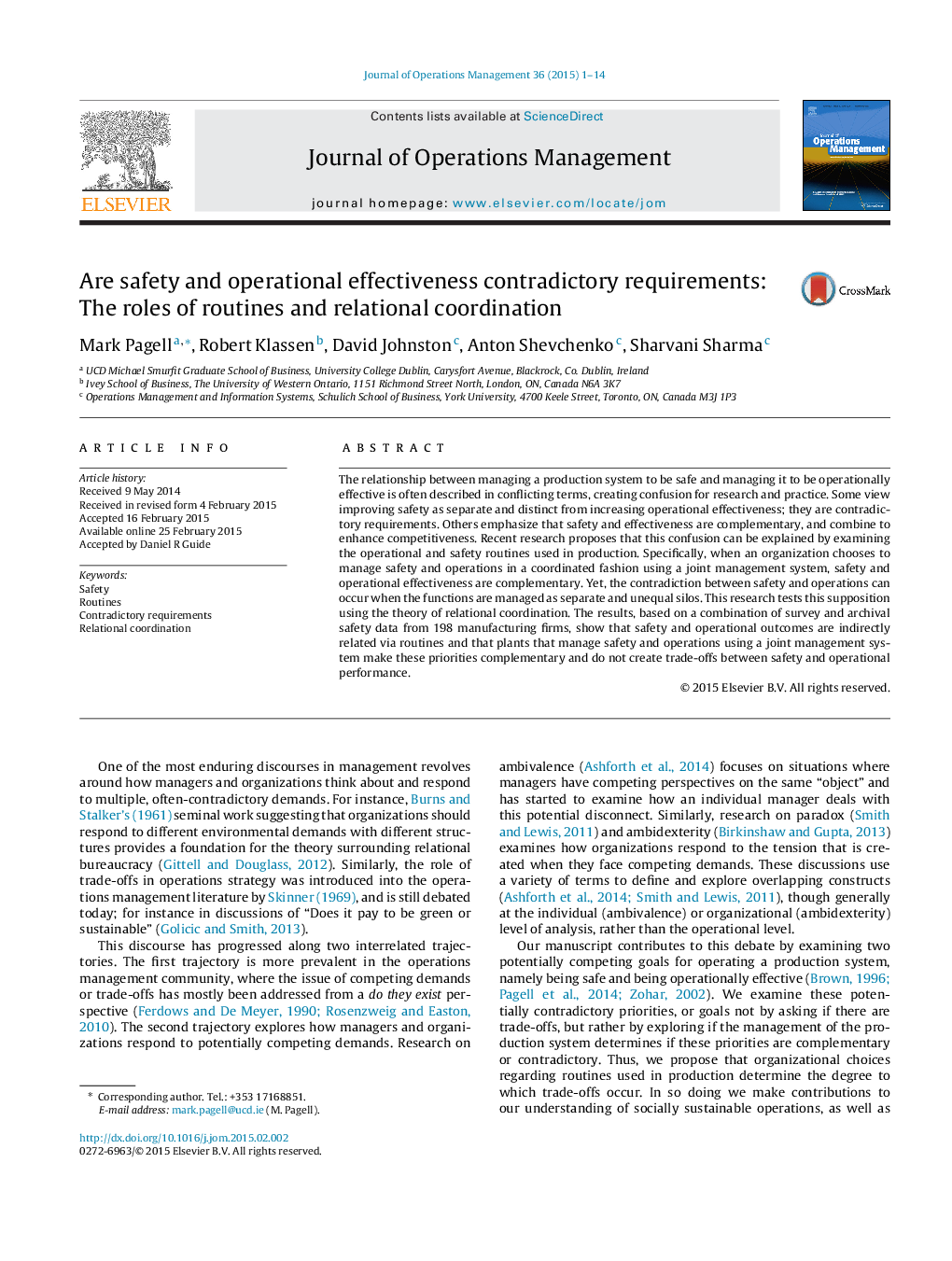| Article ID | Journal | Published Year | Pages | File Type |
|---|---|---|---|---|
| 1031709 | Journal of Operations Management | 2015 | 14 Pages |
The relationship between managing a production system to be safe and managing it to be operationally effective is often described in conflicting terms, creating confusion for research and practice. Some view improving safety as separate and distinct from increasing operational effectiveness; they are contradictory requirements. Others emphasize that safety and effectiveness are complementary, and combine to enhance competitiveness. Recent research proposes that this confusion can be explained by examining the operational and safety routines used in production. Specifically, when an organization chooses to manage safety and operations in a coordinated fashion using a joint management system, safety and operational effectiveness are complementary. Yet, the contradiction between safety and operations can occur when the functions are managed as separate and unequal silos. This research tests this supposition using the theory of relational coordination. The results, based on a combination of survey and archival safety data from 198 manufacturing firms, show that safety and operational outcomes are indirectly related via routines and that plants that manage safety and operations using a joint management system make these priorities complementary and do not create trade-offs between safety and operational performance.
